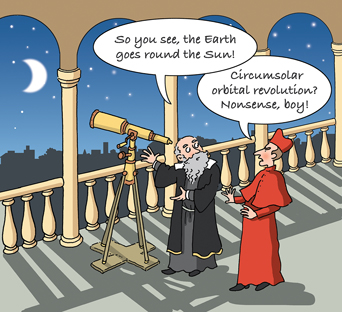7 Grammar in the real world
In previous sections of this course you have seen how a functional understanding of grammar can apply to a wide range of contexts. In this section, you will see how a functional approach, and particularly SFL, is being applied in a professional context, in this case secondary education. Shortly, you will learn about the work going on in an inner-city school in Birmingham, UK, to use functional grammar to improve student learning and achievement in their school subjects such as PE and Science.
First of all, however, it will be useful to introduce a particular aspect of grammar called ‘nominalisation’. This has been identified by functional linguists as an important feature of academic and scientific language, but one that can make scientific texts hard for learners to understand and produce scientific writing. The term will be explained as you work through the activity.
Activity 10: Raining cats and dogs
Compare these two short sentences and answer the following questions (note that the idiom ‘raining cats and dogs’ is used in British English to indicate heavy rainfall):
- What context might you expect each to have been produced in?
- What differences do you notice between the grammar patterns in each?
It got muggy really quickly and then it came down cats and dogs.
The rapid rise in humidity was followed by heavy precipitation.
Discussion
- You may have commented that the first sentence is more likely to have come up in spontaneous, informal, face-to-face conversation, where someone is telling a personal story to someone they know quite well. The second describes a similar event but seems to come from a weather report or some other scientific record of the event, and was probably written rather than spoken.
- There are a number of features you may have pointed out here. A key difference is in the way that information is packaged in each case. In the first sentence, a lot of the information is conveyed through the verb groups and adverb groups got muggy really quickly and came down cats and dogs, the noun groups are simple (e.g. made up of one pronoun) and there are two clauses linked by and. In the second, there is only one clause and one verb group was followed, which conveys information about the sequencing of events but not about what actually happened. Most information is instead conveyed through the noun groups A rapid rise in humidity and heavy precipitation. This can be shown as follows:
| Noun group | Verb group | Adverb group | Noun group | Verb group | Noun group | ||
|---|---|---|---|---|---|---|---|
| It | got muggy | really quickly | and | then | it | came down | cats and dogs. |
| Noun group | Verb group | Prepositional group |
|---|---|---|
| The rapid rise in humidity | was followed | by heavy precipitation. |
A compression of information has been enabled by the nominalisations humidity and precipitation.
This feature often seen in scientific and academic texts is called nominalisation. You saw a good example of it in Activity 9. Nouns and noun groups can be used to package meanings about entities in the real world – things or persons like mangoes, bluebottles, windowpanes, schoolgirls and clouds (often called concrete nouns). However, we can also use noun groups to talk about processes and qualities. If someone is leaving, for example, we can talk about their departure, and if they are feeling frustrated, we can talk about their frustration. Departure and frustration are both nouns, but they are not really ‘things’ in the way that a bluebottle or a windowpane is (they are often called abstract nouns). Nominalisation is the use of a noun to represent a process or quality. Through nominalisation, it becomes possible to pack into one noun group a number of meanings that might otherwise be expressed using verb groups and adverb groups.
This cartoon emphasises the fact that nominalisation can sometimes make language unnecessarily difficult and obscure. But in fact, without the ability to nominalise, i.e. to turn processes and qualities into nouns, it would be impossible to conceive of many common concepts such as ‘ownership’ or ‘movement’, or to measure abstract things such as ‘growth’, ‘birth rates’, etc. Below are some examples of processes in their verb form and their nominalised form.
| Verb form | Nominalised form |
|---|---|
| (to) evaporate | evaporation |
| (to) deliver | delivery |
| (to) arrive | arrival |
Nominalisation in scientific texts enables writers to describe the world and its phenomena in a particular way. It makes possible:
- the formation of technical terms that stand for complex but commonly occurring – and commonly understood – phenomena (e.g. reproduction, mutation, stability).
- the development of abstract concepts and properties.
When we use nominalisations, especially for abstract concepts and properties, we open up the possibility of precisely measuring and recording what was previously intangible. This makes nominalisation an important feature of the language of school subjects in which pupils need to learn how to understand the world of science, history, geography and so on in precise and more academic ways (for example, they need to be able to talk about the rise in humidity and heavy precipitation rather than about raining cats and dogs). In technical fields this is particularly useful, since so much activity revolves around measuring, comparing and ordering.


